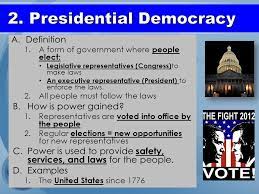An intense debate is going on in the social media e over the enforcement of the presidential system in Pakistan, which has invited the wrath of opposition parties and critics of the presidential system. The advocates of the presidential form of government are of the view that all major powers, including the USA, China, Russia, and France, have the presidential form of government and this system makes the decision- making process much easier, and that it is more stable and ensures continuity of government policies.
But many in the country believe that the presidential system is synonymous with dictatorship as it is one-man rule. They further hold that the presidential system has been tried, tested and found to be flawed and failed in the country in the past.
Unlike the USA, after the partition of the Subcontinent, the constitution making process was not a matter of reflection and choice but depended on vicissitudes of time and power politics. We were unable to come out of the lasting spell of the Government of India Act, 1935 which remained the constitution of Pakistan till the framing and enforcement of the first Constitution of Pakistan in 1956. The 1973 Constitution, though it declared itself a federal state with parliamentary government at the centre, was a result of limited choices. It is true that Pakistan had experienced different kinds of governments; from democracy to military dictatorship, to civilian martial law by Z.A. Bhutto but governance was construed as a seminal issue.
It is erroneous to equate the presidential system with dictatorship as those are completely different. Like parliamentary democracy, the presidential system too is a democratic system. In the presidential system, the president is elected either directly by people or through an electoral college which makes the executive power concentrated in his office. The president derives his authority from the Constitution and law unlike the dictator. The president is elected for a definite period of time but that is not the case with dictatorship.
Given the current political scenario, the presidential system is not perilous for democracy but, in reality, it is a threat to the vested interest of the corrupt political elite of our country. Those who hold that the presidential system failed in the past should not ignore this fact that the previous models of presidency were introduced to this country by military dictators who had designed them according to their own requirements to perpetuate themselves in power.
Many developed states which are famously known as the father of democracy are under this form of governance. For example, the US Constitution is regarded as the father of the presidential system of government. It worked well over the last more than two centuries and is considered one of the main reasons for building the USA into a strong nation and eventually into a world power in the 20th century. The US constitutional model has been followed in the countries that came under US influence in the 19th and 20th centuries.
The US Constitution revolves around the doctrine of Separation of Powers coupled with the system of Check and Balance. The American Constitution divides the governmental power into legislative, executive, and judicial categories. These functions are separate and are appropriately exercised by separate branches of governments. These functions of government are commingled through check and balance system only insofar as necessary to preserve the integrity of each branch.
It is also pertinent to mention here that under the presidential form of government the president cannot act capriciously, arbitrarily or according to his own personal whims. His actions are subject to scrutiny either by the parliament or judiciary depending upon the model of presidency. For Instance, the Congress in the USA has power to impeach the president on the grounds of conviction, bribery, or other high crimes and misdemeanors. It can refuse to ratify a treaty negotiated by the president. The US Supreme Court can declare a presidential action as repugnant to the Constitution if the same is ultra- vires the Constitution. It is clear from this discussion that the president cannot go beyond the sphere of powers allotted to him by the Constitution and law.
If people in Pakistan want presidential democracy, it can be introduced through a constitutional amendment. Parliament can amend the constitution with two third majorities of its Houses. A referendum can also be held under Article 48 of the Constitution of Pakistan 1973 which reads as “if the Prime Minister considers it necessary to hold a referendum on any matter of national importance, he may refer the matter to a joint sitting of the Parliament and if it is approved in joint sitting, the Prime Minister may cause such matter to be referred to a referendum in the form of question that is capable of being answered by either’ Yes’ or’ No’”.
Given the current political scenario, the presidential system is not perilous for democracy but, in reality, it is a threat to the vested interest of the corrupt political elite of our country. Those who hold that the presidential system failed in the past should not ignore this fact that the previous models of presidency were introduced to this country by military dictators who had designed them according to their own requirements to perpetuate themselves in power.























